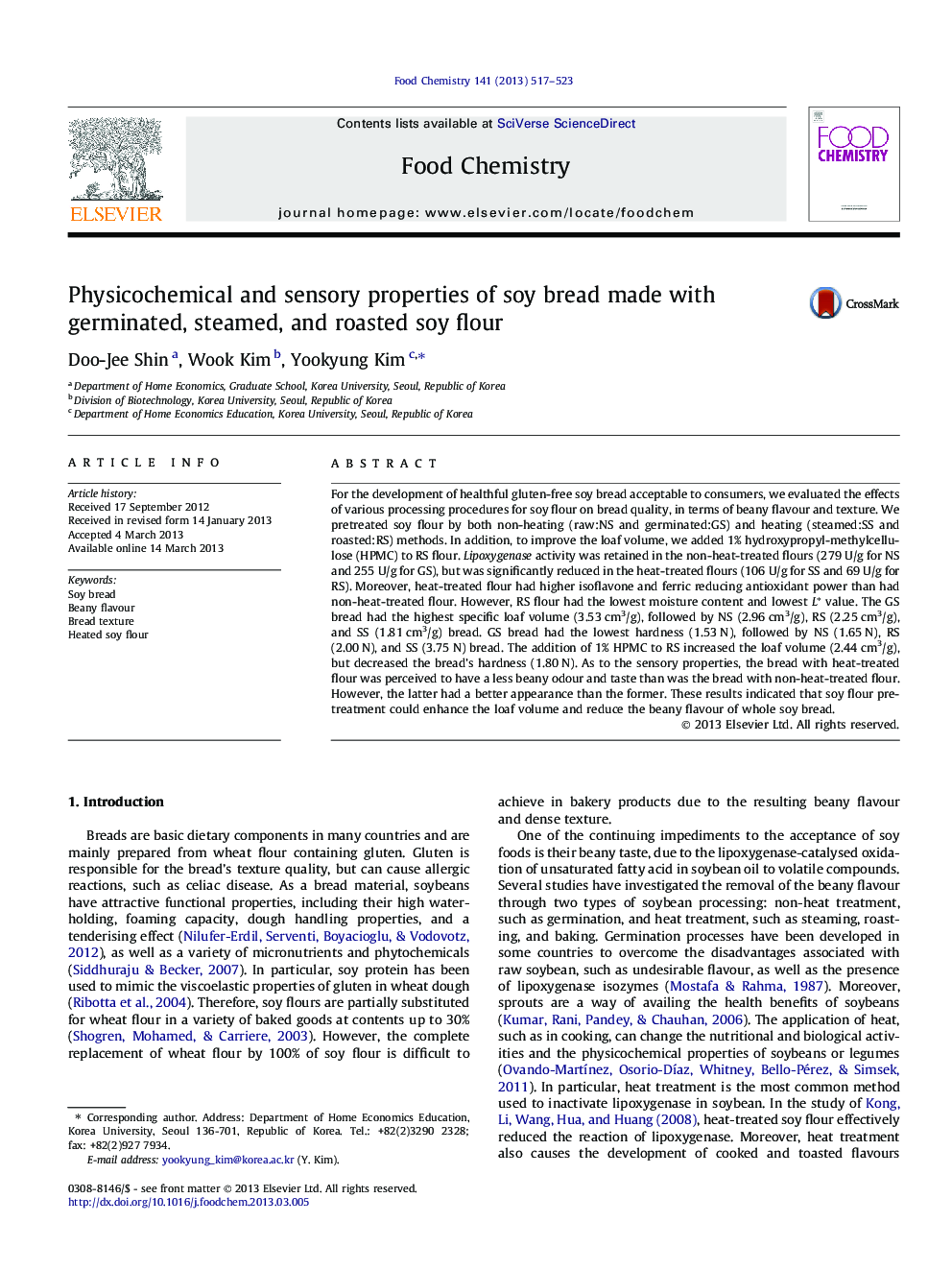| Article ID | Journal | Published Year | Pages | File Type |
|---|---|---|---|---|
| 10542376 | Food Chemistry | 2013 | 7 Pages |
Abstract
For the development of healthful gluten-free soy bread acceptable to consumers, we evaluated the effects of various processing procedures for soy flour on bread quality, in terms of beany flavour and texture. We pretreated soy flour by both non-heating (raw:NS and germinated:GS) and heating (steamed:SS and roasted:RS) methods. In addition, to improve the loaf volume, we added 1% hydroxypropyl-methylcellulose (HPMC) to RS flour. Lipoxygenase activity was retained in the non-heat-treated flours (279Â U/g for NS and 255Â U/g for GS), but was significantly reduced in the heat-treated flours (106Â U/g for SS and 69Â U/g for RS). Moreover, heat-treated flour had higher isoflavone and ferric reducing antioxidant power than had non-heat-treated flour. However, RS flour had the lowest moisture content and lowest Lâ value. The GS bread had the highest specific loaf volume (3.53Â cm3/g), followed by NS (2.96Â cm3/g), RS (2.25Â cm3/g), and SS (1.81Â cm3/g) bread. GS bread had the lowest hardness (1.53Â N), followed by NS (1.65Â N), RS (2.00Â N), and SS (3.75Â N) bread. The addition of 1% HPMC to RS increased the loaf volume (2.44Â cm3/g), but decreased the bread's hardness (1.80Â N). As to the sensory properties, the bread with heat-treated flour was perceived to have a less beany odour and taste than was the bread with non-heat-treated flour. However, the latter had a better appearance than the former. These results indicated that soy flour pretreatment could enhance the loaf volume and reduce the beany flavour of whole soy bread.
Keywords
Related Topics
Physical Sciences and Engineering
Chemistry
Analytical Chemistry
Authors
Doo-Jee Shin, Wook Kim, Yookyung Kim,
